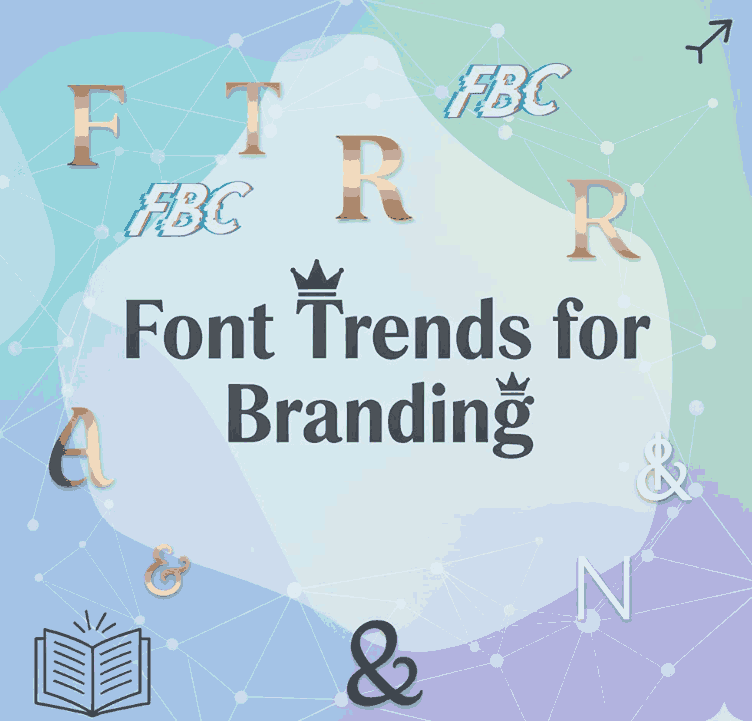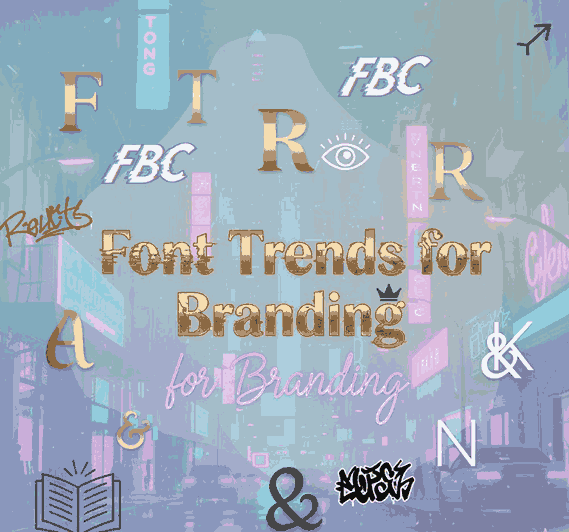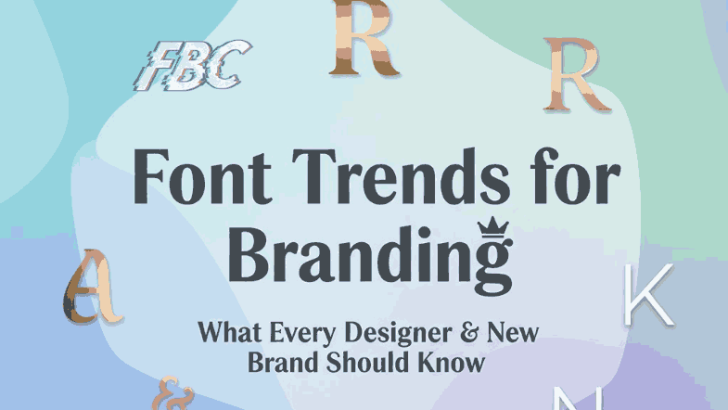Table of Contents
- Why Typography Trends Matter for Branding
- Key Font Trends Shaping Brand Identity in 2025
- How Brands Can Leverage these Font Trends
- Highlighting Top Font Options from Edric Studio
- Best Practices & Pitfalls to Avoid
- Conclusion
- References
1. Why Typography Matter Font Trends for Branding
Typography is not just about choosing legible letters; it’s a critical component of brand identity. The right font can communicate tone, personality, heritage, and trust — before a single sentence is read. According to one article, “the font a brand chooses has an uncanny ability to convey emotions, tell stories, and even shape how we perceive them as a business.”
As brands are competing in increasingly visual and digital‐first environments, staying aware of Font Trends for Branding helps them stay relevant, distinctive and memorable. For a font foundry or font seller like your team at Edric Studio, this meaningfully influences how you design, market and position your typefaces.

2. Key Shaping Font Trends for Branding Identity in 2025
Here are several emerging font trends that brands and designers should pay attention to:
Trend 1: Resurgence of Character & Craft
Many design voices note a backlash against ultra-clean, generic sans-serifs, with brands returning to more expressive, serif, hand-crafted or character-rich typefaces. In branding terms, this means fonts that carry personality, quirk, and a sense of authenticity. These traits help brands stand out in a crowded digital landscape.
Trend 2: Bold, Attention-Demanding Display Type
With content everywhere, brands are using large size, bold weight fonts to grab attention. For example: “Bold Fonts That Demand Attention” is cited as a major 2025 trend.
When used in hero headlines, logos or key brand assets, these fonts can make a strong first impression.
Trend 3: Nostalgia Meets Modernity – Retro Revivals
Retro fonts (with modern polish) are trending: think vintage cues, classic serifs, or retro scripts updated for today’s mediums.
For branding, this offers a way to evoke heritage, credibility, or emotional connection while remaining fresh.
Trend 4: Variable & Responsive Typography
On the web and digital media, fonts that adapt (variable fonts) and behave well across devices are increasingly vital.
Brands must consider how typography functions not just in print but on mobile, web apps, social media and interactive experiences.
Trend 5: Typography as Storytelling & Emotion
Fonts are being used not just for readability but for tone, mood and brand narrative. The “Psychology of Typography” article outlines how font choice influences brand message and consumer trust.
As a brand, choosing a font is a strategic decision — it supports your voice and values.
3. How Brands Can Leverage these Font Trends for Branding
Here are practical steps brands (and designers) can take to harness font trends effectively:
- Start with brand personality: Before picking a font, clarify your brand’s tone—are you classic, playful, tech-forward, heritage? According to one guide on font choice: align font with your brand’s values and audience.
- Mix trend awareness with timelessness: While it’s smart to incorporate a trend (e.g., retro revival, bold display), it’s equally important that your typography stands up over time.
- Ensure cross-medium readability: If your font only looks good in print but fails on mobile or at small sizes, the brand experience suffers.
- Pair strategically: Many branding executions use a strong display font (for headlines/logo) paired with a neutral body font. The display gets the character; the body font gets legibility.
- Use fonts as part of the visual system: Typography doesn’t stand alone — colour palette, imagery, spacing, layout and motion all interact with your font choice.
- Be mindful of licensing & usage: If you’re using—or offering—a font for branding, ensure the licensing covers all use cases (print, web, large display, variable weights).
- Leverage your font catalog for branding opportunities: As a font foundry, you can position some of your fonts in the context of brand identity trends — e.g., “this font delivers the retro revival look” or “this font works for bold, modern brand headlines”.
4. Highlighting Top Font Trends for Branding Options from Edric Studio
Here are four fonts from Edric Studio that are well-positioned for “font trends for branding”. You can reference them in your blog as examples/design inspirations:
- Allcan Modern Font – A modern font with clean lines, ideal for brands seeking a sleek, contemporary look with strong readability.
- New Leaves Font – A more distinctive font with character; suitable for brands that want personality and a memorable tone.
- Social Trend Sans Serif Font – A typeface designed for digital/social media use, matching trend 4 above (responsive/modern usage).
- **Strong Shade Font** – A bold, display-oriented font that works brilliantly for hero sections or branding assets where you want maximum impact.
By linking to these fonts, you both showcase real-world applicability and drive traffic to your product pages — combining informational value + conversion potential.

5. Best Practices & Pitfalls to Avoid
Here are some dos and don’ts when it comes to applying font trends in branding:
Do:
- Choose typography as part of your brand system, not as an afterthought.
- Test fonts across mockups/mediums: print, web, mobile, packaging.
- Limit display fonts in your system to 1–2 strong options, then pair with body fonts.
- Leverage fonts to express brand tone: e.g., a heritage brand might use a serif revival; a disruptive startup might pick bold sans-serif with character.
- Update your typography periodically—but avoid chasing every micro-trend so that your brand remains coherent over time.
Don’t:
- Rely solely on trendy fonts without considering brand fit or usability. A font might be “in” but totally off-tone.
- Sacrifice readability for style: overly decorative fonts used in body copy or small sizes can undermine brand professionalism.
- Ignore licensing constraints: using a font beyond its licence can create legal issues, especially in branding.
- Use too many novelty fonts: Having five decorative fonts in your brand system usually leads to confusion, inconsistent branding and wasted resources.
6. Conclusion Font Trends for Branding
In today’s branding landscape — where attention is scarce and competition intense — typography plays a central role. The right font can differentiate a brand, evoke emotion, and express personality. By understanding key trends like bold display type, retro revival, variable fonts, and character-rich typography, brands can stay ahead of the curve.
For font creators and foundries like Edric Studio, these trends are not just inspiration—they’re a roadmap for designing and marketing fonts that meet modern branding needs. Your collection of fonts (Allcan Modern, New Leaves, Social Trend Sans Serif, Strong Shade) speaks directly to these evolving demands.
When brands choose their fonts thoughtfully—aligning with both trend and timelessness—they craft identities that resonate, endure and stand out.
7. References
- CreativeBoom – The biggest font trends to look out for in 2025.
- Designity – Typography Trends 2025: The 5 Biggest Styles Shaping Design.
- Nicole Steffen – 2025 Typography Trends That Make People Stop and Look.
- Design & Paper – They Are Calling It a Sans-Serif Backlash.

